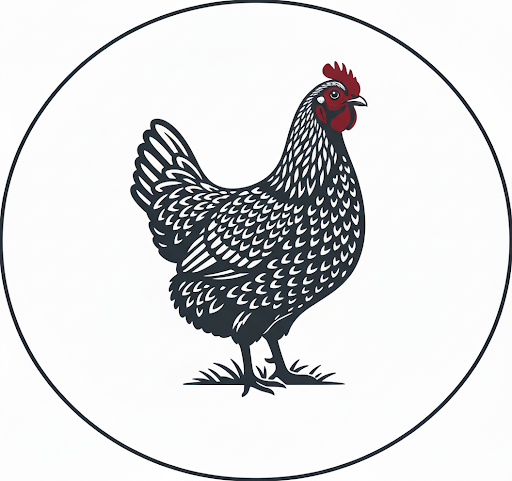Do Barnevelders deserve their status as winter egg layers? The results of a three year laying test against 3 other chicken breeds.
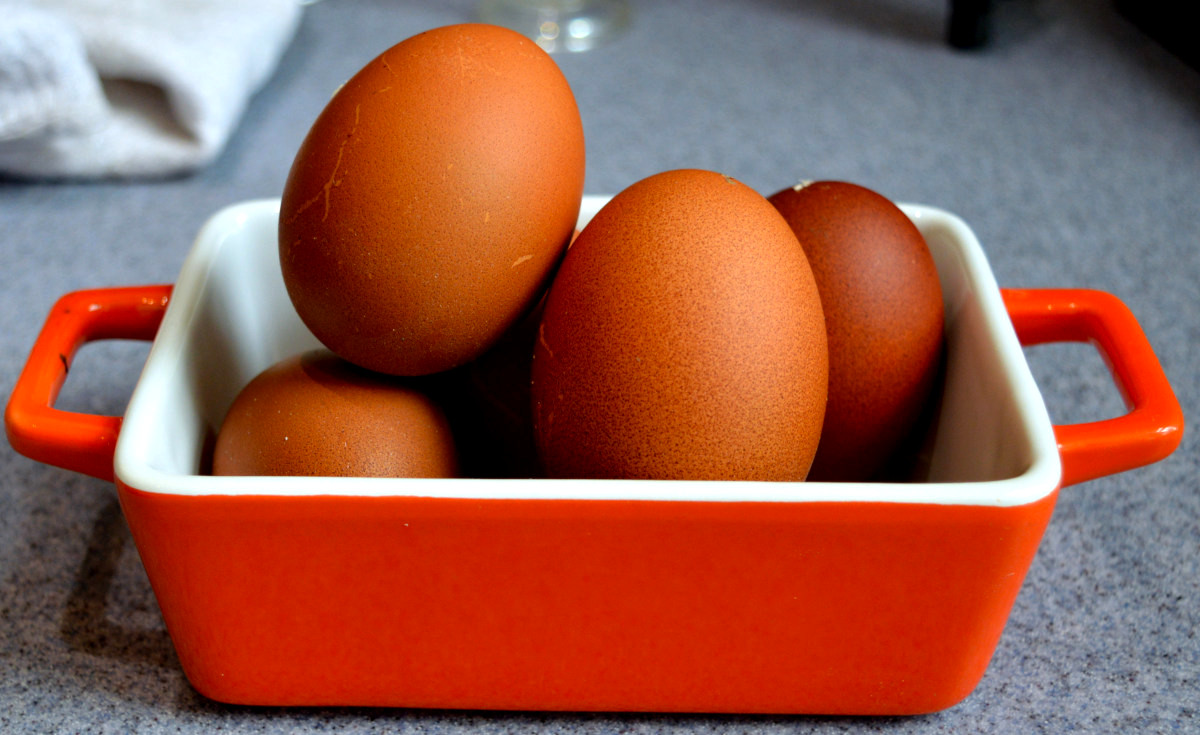
In the world of backyard chickens, a "winter layer" is a bird that keeps laying eggs even when the days get shorter and the weather turns sour. Most hens slow down and stop when light levels drop. It’s a natural pause, not a fault. After all, chickens aren’t egg machines—they’re living creatures with rhythms and needs.
Table of Contents
True winter layers don’t just tolerate the cold. They keep producing eggs steadily when many other breeds tap out until spring.
Barnevelders, with their glossy feathers and friendly vibes, are often hailed as the go-to breed for winter egg production. It was one of the reasons I chose this breed originally.
But is the hype real?
In this article, I’ll present the results from a 3 year laying test against 3 other breeds and dig into whether these Dutch beauties deliver on their promise.
Barnevelders were tested against white Leghorns, Wyandottes and Rhode Island Reds in a three year long laying test.
TL;DR - I just want the results:
- The 3 year laying test between Barnevelder chickens and 3 other breeds shows they are average winter layers at best!
- Egg production numbers and total egg weight correspond well with other heritage breeds but fall behind the white egg breeds like the leghorn.
- Barnevelders consistently laid the heaviest eggs during the test.
- Barnevelder eggs were the most valuable.
- They do lay later into the season than other birds on test.
The laying test results:
According to the current literature Barnevelders are supposed lay about 180-200 medium to large brown eggs per year and are known for tolerating cold weather better than many breeds.
Below: Table 1 - The average number of eggs per hen per month in the test.
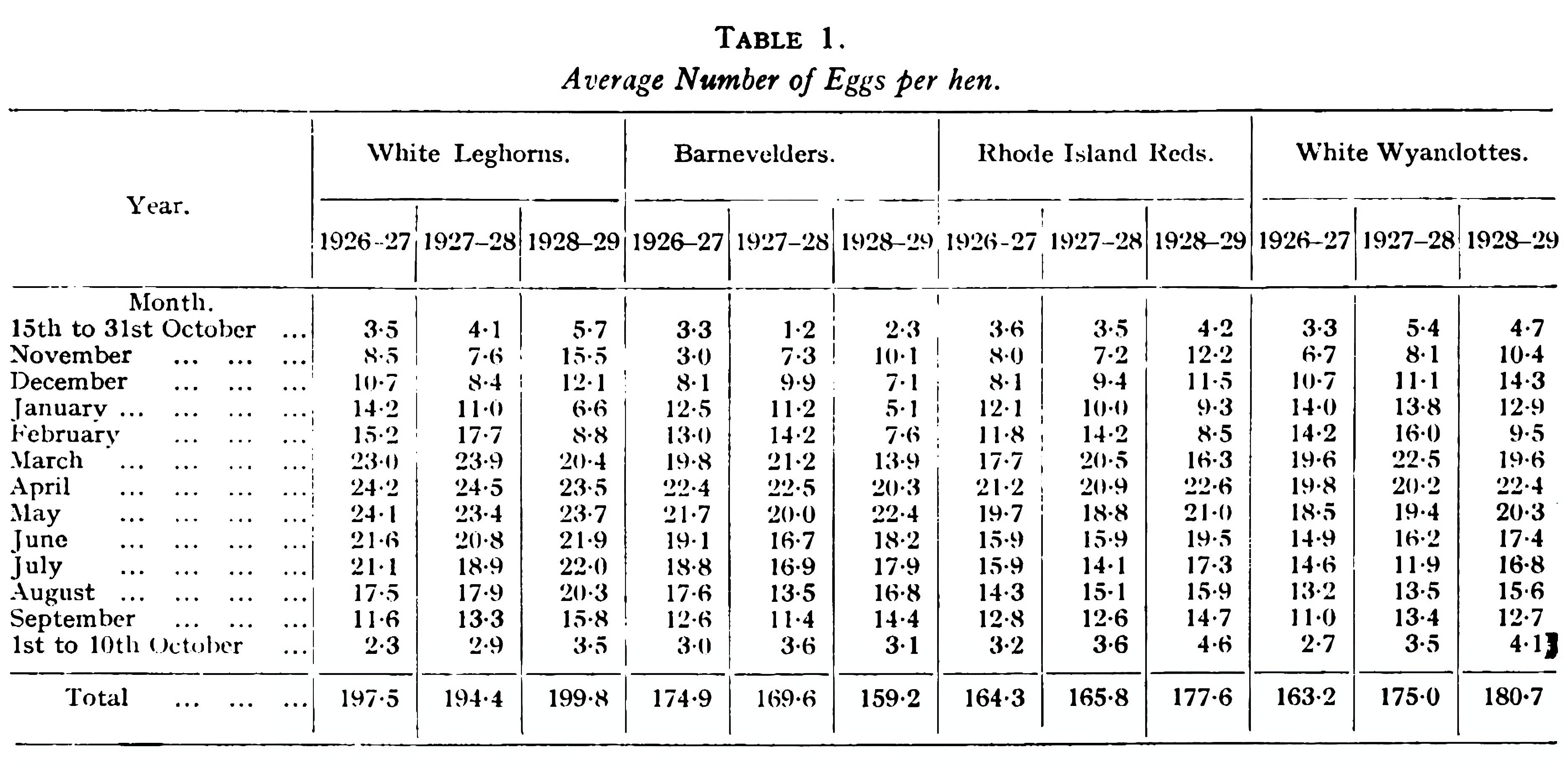
You can see that the 49 Barnevelder hens in the test laid an average of 174.9 eggs in their first year, 169.6 eggs per year in their second season and 159.2 eggs in their third year.
Egg production is heavily influenced by daylight hours. Hens generally need a minimum of 12 hours of light per day to begin and maintain good production. In many parts of the world, winter daylight is far short of this.
Below: Average production figures per hen over all three years.
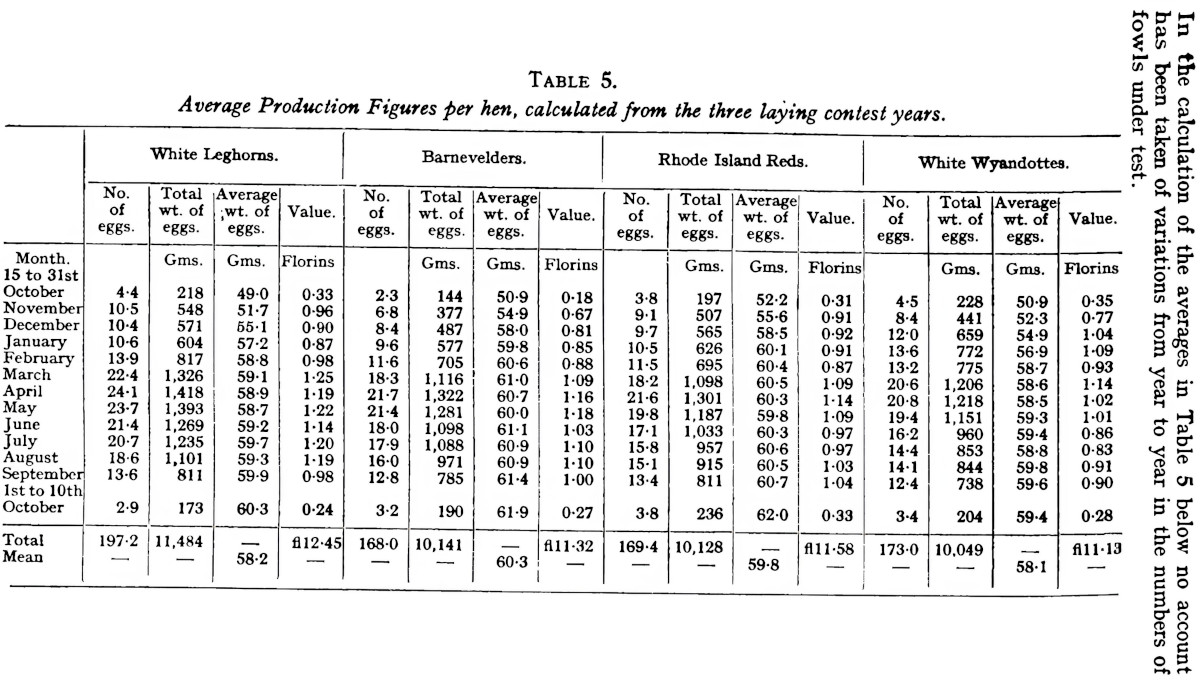
You can see from the table above that Barnevelders fell just behind all the other breeds on test in terms of numbers with the difference being made up in total egg weight over the year.
Egg size does not tell the whole story:
Total weight of eggs laid exceeded both RIR and Wyandottes for the first two years of the test but fell behind in year three. All three heritage breeds fell well behind the leghorns in the test both for numbers and total weight.
Below: Table 2 - The average and total weights of eggs laid for each bird.
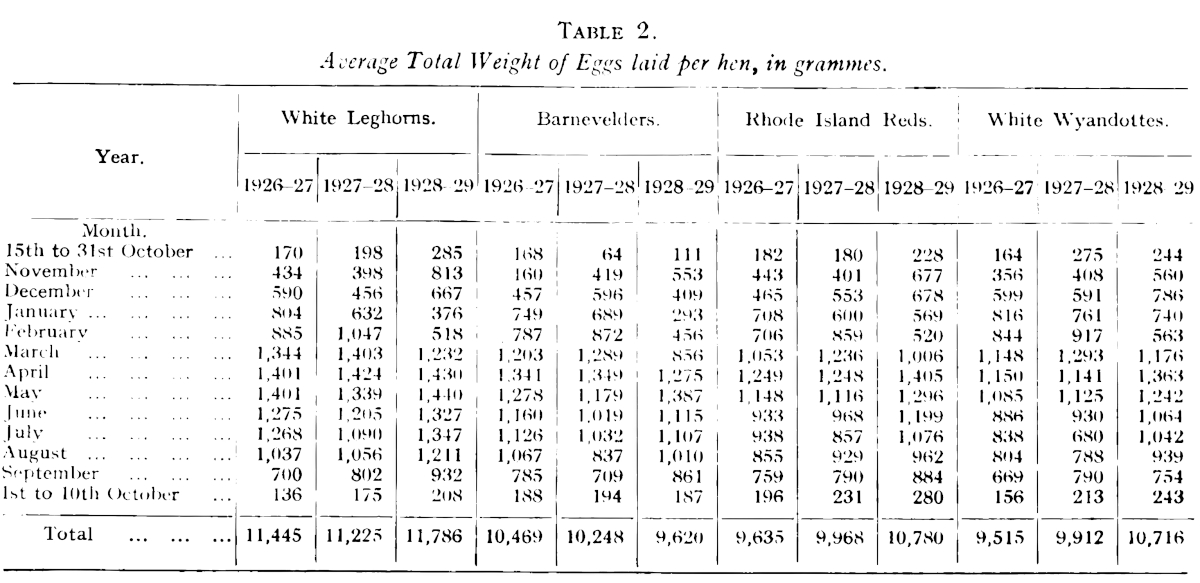
Barnevelder chickens are often described as good winter layers, and they can live up to that, especially if they’re young, well-fed, and housed properly. But if you’re expecting a full egg basket all winter long from a small flock, you might be disappointed.
What you will get, however, is a flock that’s happy in cold weather, easy to care for, and still gives you a decent return through much of the off-season—without fuss or drama.
Below: Table 3 the average egg weight per hen in grams.
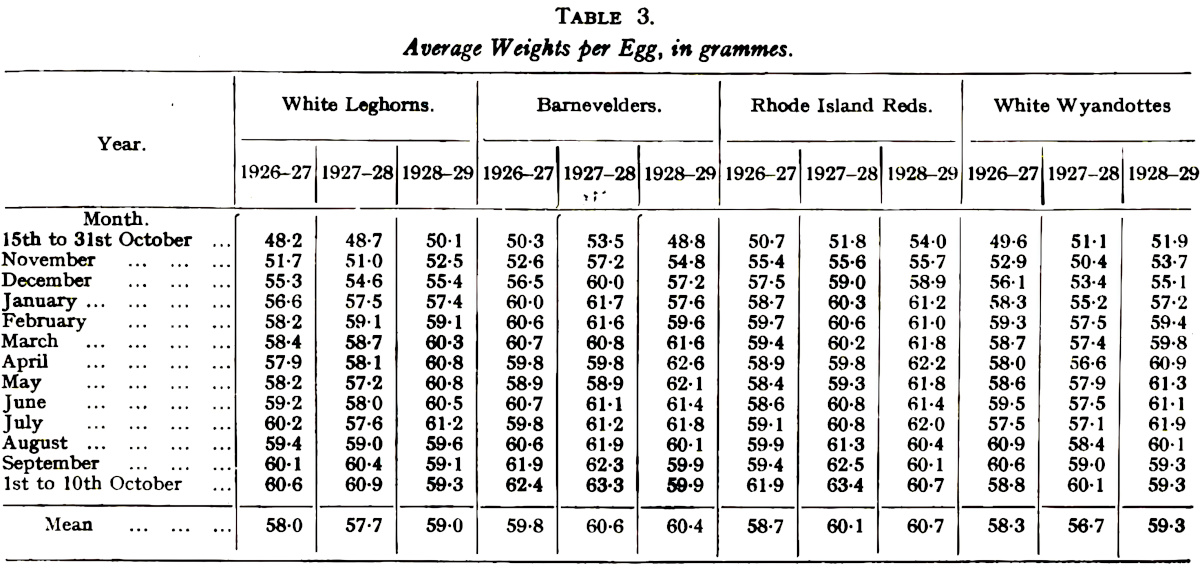
Egg weight is one category where the Barnevelder comes good, they consistently laid the heaviest eggs during the test.
Patience is a virtue with Barnevelders. These lovely birds can take a bit longer to start laying than some other breeds. While many dual-purpose breeds might start around 6 months, it's not uncommon for Barnevelders to hold out until they are 8, or even 10 months old.
Below: I am happy with the off season performance of my flock. this is 17 eggs from 44 birds in January.
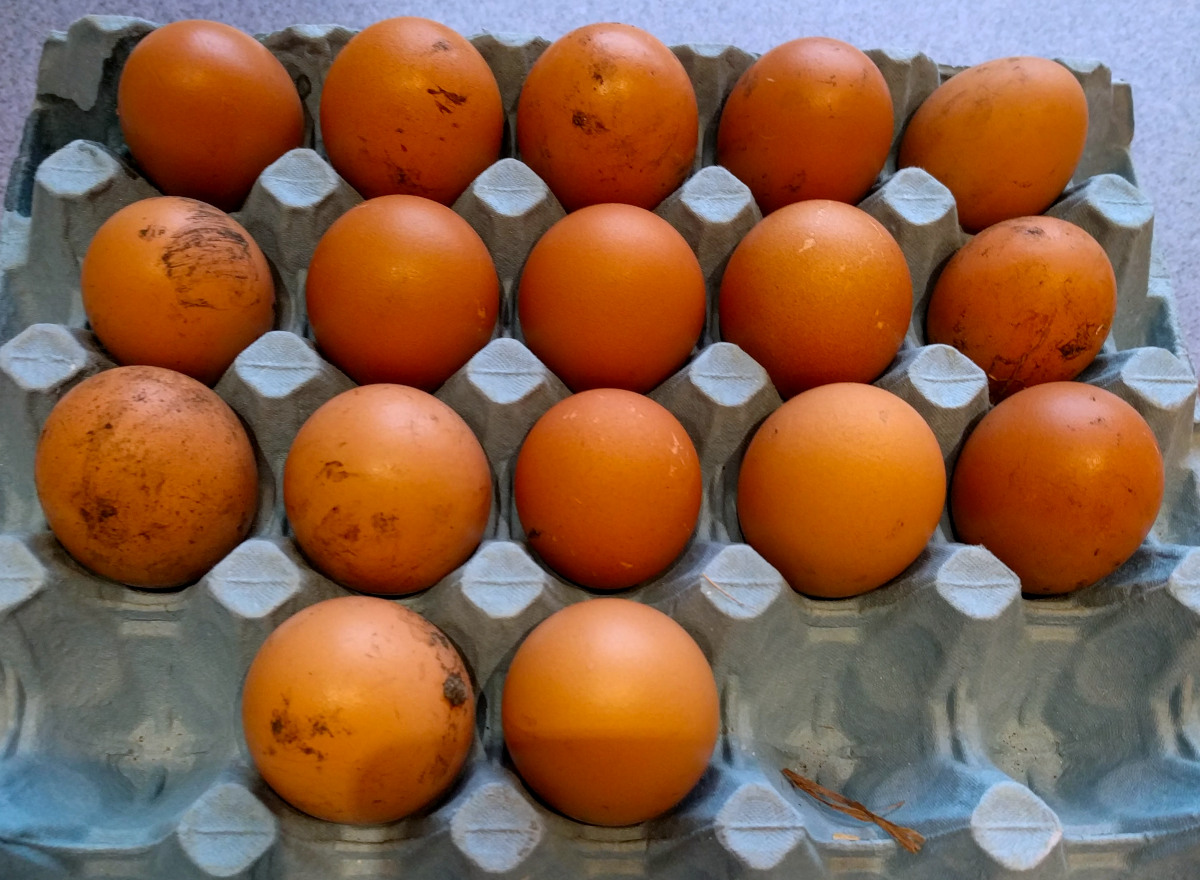
This is especially true for birds hatched later in the year. So, if your young pullet isn't gracing you with eggs as winter approaches, she might just be taking her sweet time.
I have found that these young pullets can come into lay very early and produce through the later parts of winter with no fuss. Older hens in my flock have a staggered moult with those that raised broods early in the year laying later into Autumn. They also seem to start later the season after.
Egg value:
Barnevelder eggs were consistently more valuable year after year, probably because of their size and colour.
Below: Table 4 - The value of eggs laid month by month. For reference The British florin, or two-shilling piece (2/– or 2s.), was a coin worth 1⁄10 of one pound, or 24 pence. It was issued from 1849 until 1967. A florin from when this test was carried out is worth £4.20 in today's money.
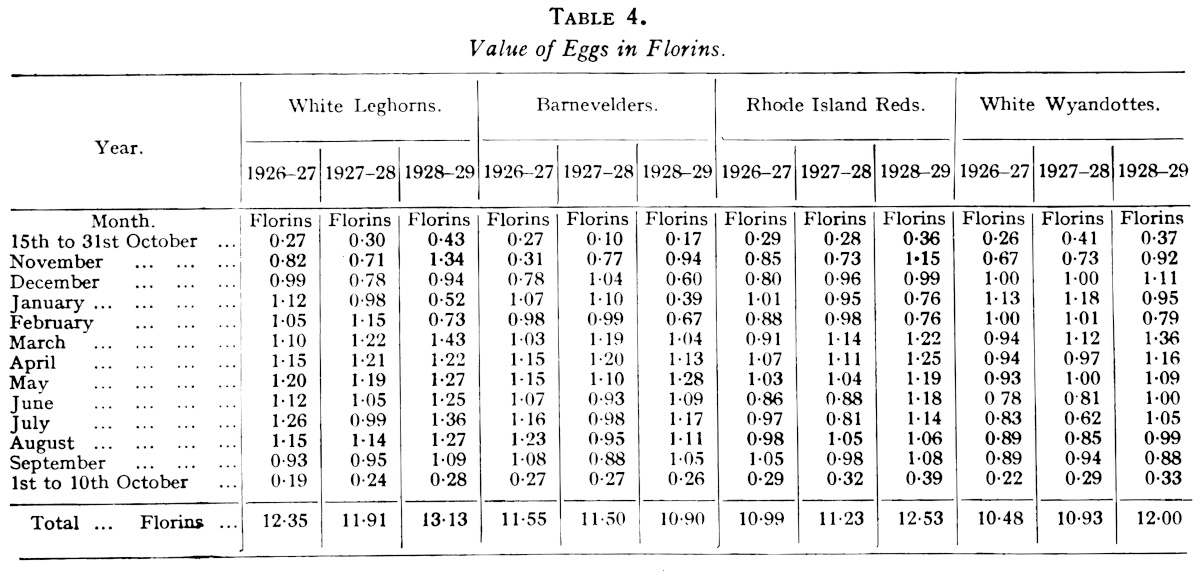
Strain Matters: Like many breeds, not all Barnevelders are created equal. Some strains have been bred more for their stunning appearance or for the coveted dark, chocolate-brown egg colour, rather than for peak winter production.
If winter eggs are your top priority, it’s worth seeking out breeders who focus on the utility traits of their Barnevelders.
They are inherently cold-hardy, with their dense feathering and sturdy build. But to say they all lay prolifically right through the harshest winter might be stretching it. They are dependable, yes, but perhaps not the undisputed winter egg machines some portray them to be without the right conditions and strain.
